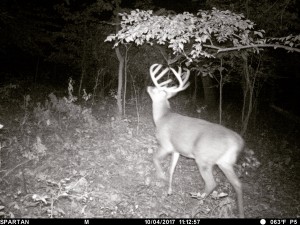 Researchers at the University of Georgia’s “Deer Lab” conducted an extensive study on the scraping behavior of whitetail bucks. On major finding: 85 percent of all scraping (by bucks of all ages) occurs at night, and a 3½-year-old or older buck is rarely observed at a scrape. Take that at face value and you’d never hunt scrapes again. But not so fast; read between the lines for some useful data.
Researchers at the University of Georgia’s “Deer Lab” conducted an extensive study on the scraping behavior of whitetail bucks. On major finding: 85 percent of all scraping (by bucks of all ages) occurs at night, and a 3½-year-old or older buck is rarely observed at a scrape. Take that at face value and you’d never hunt scrapes again. But not so fast; read between the lines for some useful data.
When analyzing the time codes on their trail-cam images and video reels, the researchers noticed that a flurry of heavy scraping occurs at or just after dusk on late-October and early-November days.
Hmm, so here’s how to play off that science. Scout for a doe trail, draw or ridge funnel that connects a thick bedding area with a food source, like corn, beans or acorns. The more active scrapes (and fresh rubs) along that trail or in that funnel the better. Set up 100 to 200 yards or farther off the feed and at least halfway back toward the bedding cover. A big deer might pop out of the cover at dusk and work a couple of scrapes near his bed before moving out toward a feeding spot. Perched back in the cover, you might pull an ambush in those last five glimmering minutes.
During the two years of the Georgia study, only a couple 3½-year-old bucks were recorded at any of the scrapes, and no fully mature bucks were ever seen. That’s fascinating, especially when you consider that hunters killed several 4½-year-old trophies within a few hundred yards of camera-rigged scrapes! The researchers surmised that the old bucks were not only nocturnal, but they also they checked the scrapes from well downwind and out of camera range. But the mere fact that the bucks were moving in shooting light and in the vicinity of the scrapes gives us hope. Hunt on a trail or funnel in cover, 100 yards or so downwind of a heavily scraped area—you might get lucky and catch a big deer moving in the first or last five minutes of shooting light one day.





